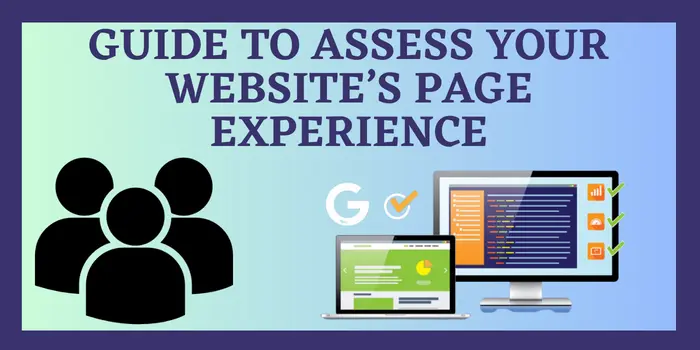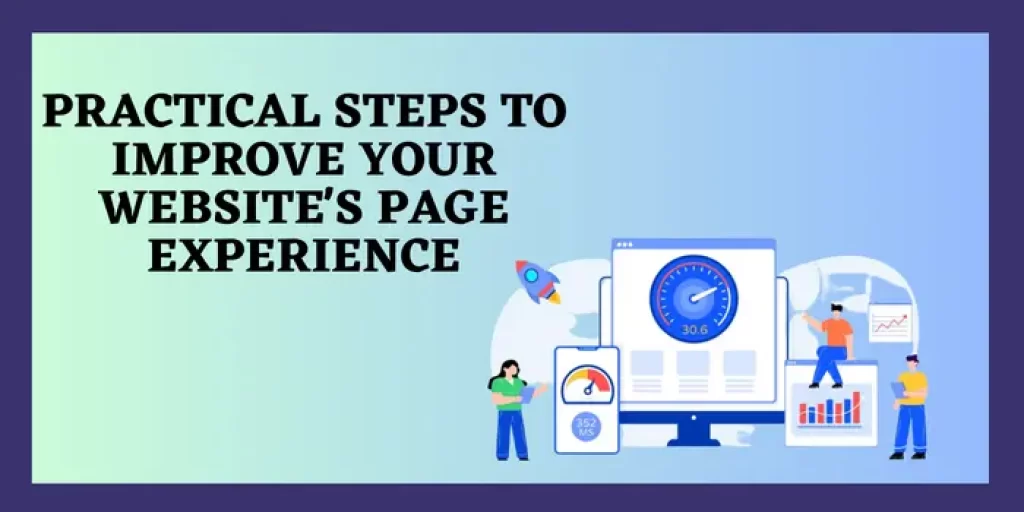
The mechanics of SEO in 2024 are much different. It is now closely tied to ‘page experience’.
The browsing experience your website delivers to the visitors plays a critical role in its ranking on SERP.
So, if you haven’t already, pivot your SEO strategy to UX. Within this, we will provide comprehensive information.
Understanding Page Experience
Page experience refers to users’ overall satisfaction when interacting with a website.
It encompasses various factors such as loading speed, mobile-friendliness, security, accessibility, and Google’s Core Web Vitals.
id
Google now considers page experience as a significant ranking factor, making it essential for businesses to prioritize this aspect of their site.
The Significance of Page Experience
A positive page experience not only improves your website’s organic search rankings but also enhances user engagement and conversions.
Users are more likely to stay on a site that offers a seamless, enjoyable experience.
Colorado Springs SEO Company experts emphasize the importance of page experience in retaining customers and driving business growth.
Assessing Your Site’s Page Experience: Core Web Vitals
Google has introduced Core Web Vitals as essential metrics for evaluating page experience. These metrics focus on loading performance, interactivity, and visual stability.
1. Largest Contentful Paint (LCP)
LCP evaluates the loading performance of the largest content element on the page. Aim to achieve an LCP of 2.5 seconds or less for optimal loading speed.
2. First Input Delay (FID)
FID evaluates the interactivity of a page, measuring the time it takes for the browser to respond to the user’s first interaction. Set your goal to achieve an FID of 100 milliseconds or faster.
3. Cumulative Layout Shift (CLS)
CLS assesses the visual stability of a page, quantifying unexpected layout shifts during the loading process. Strive to achieve a CLS score of 0.1 or lower.
Use Google’s PageSpeed Insights and Search Console to assess your site’s Core Web Vitals and identify areas for improvement.
Additional Factors for Assessing Page Experience
Besides Core Web Vitals, consider these elements to assess your site’s page experience:
Loading Speed
Slow-loading pages negatively impact user experience, causing higher bounce rates and lower search rankings. Measure your site’s loading speed using tools like Google’s PageSpeed Insights.
Mobile-Friendliness
With mobile devices dominating internet usage, it is crucial to have and make mobile-friendly website. To ensure compatibility with mobile devices, utilize Google’s Mobile-Friendly Tool to assess and improve your website’s mobile-friendliness.
Security
A secure website is essential for building user trust and protecting sensitive data. Ensure your site uses HTTPS and check your site’s security with tools like SSL Server Test by Qualys SSL Labs.
Accessibility
Accessibility ensures your website is usable for all visitors, including those with disabilities. Assess your site’s accessibility with tools like the Web Accessibility Evaluation Tool (WAVE).
Practical Steps to Improve Your Website’s Page Experience

Implement these modifications to elevate user satisfaction on your website:
1. Optimize Loading Speed and Core Web Vitals
Compress images using tools like TinyPNG.
Minify CSS and JavaScript to reduce file sizes.
Leverage browser caching for faster subsequent page loads.
Optimize server response times by upgrading your hosting plan or using a content delivery network (CDN).
2. Boost Mobile-Friendliness
Implement a responsive design to accommodate different screen sizes.
Optimize text and button sizes for easy reading and tapping on mobile devices.
Simplify navigation to help users find information quickly.
3. Strengthen Security
Obtain an SSL certificate and implement HTTPS.
Update software, plugins, and themes regularly.
Implement strong passwords and use two-factor authentication for added security.
In addition to that, to strengthen security you can employ effective measures to enhance the security of your website and protect it from hackers. So, look out for 15 Great tips to secure your website from hackers.
4. Enhance Accessibility
Add descriptive alt-text for images to aid users with visual impairments.
Ensure proper color contrast between text and background for better readability.
Use clear headings to organize content and improve navigation for screen readers.
Provide keyboard navigation for users who cannot use a mouse.
Make sure to Include transcripts for audio content and captions for video content.
Design clear, consistent layouts and avoid using complex or confusing user interface elements.
5. Improve Content Quality and Relevance
Conduct keyword research to identify topics and phrases relevant to your audience.
Write informative, engaging content that addresses users’ needs and concerns.
To improve readability, break up long text with subheadings, bullet points, and images.
Update outdated content to keep the information accurate and current.
6. Encourage User Engagement
Implement clear calls to action (CTAs) to guide users toward desired actions.
Add social sharing buttons to promote content sharing and increase visibility.
Offer opportunities for users to provide feedback and interact with your brand, such as comment sections, forums, or contact forms. It has a very effective way to increase website traffic on an organic search result page.
7. Optimize Internal Linking
Strengthen your site’s structure by adding relevant internal links between related content.
Use descriptive anchor text for internal links wordpress to help users and search engines understand the context of linked content.
Avoid overloading pages with too many links, as it can be overwhelming and confusing for users.
8. Reduce Pop-ups and Intrusive Elements
Limit the use of pop-ups, interstitials, and other intrusive elements that can disrupt the user experience.
If using pop-ups, ensure they’re easy to close and don’t block essential content.
Consider using less intrusive alternatives like banners or slide-in forms to capture user information or display promotional content.
9. Implement Structured Data
Add structured data markup to your site’s content to help search engines better understand and display your content in search results.
Use schema.org vocabulary and follow Google’s guidelines for implementing structured data.
Test your structured data implementation with Google’s Rich Results Test tool to ensure it’s correctly formatted.
10. Monitor User Feedback
Collect and analyze user feedback through surveys, reviews, and social media to gain insights into potential pain points in the user experience.
Address user concerns and suggestions to continuously improve the overall page experience.
Respond to user feedback promptly and courteously to demonstrate your commitment to providing a positive experience.
11. Test and Optimize User Flows
Use tools like Google Analytics to track user behavior and identify potential bottlenecks or drop-off points in the user journey.
Implement A/B testing to experiment with different layouts, CTAs, and design elements to optimize user flows.
Monitoring and Maintaining Page Experience
After improving your site’s page experience, it’s essential to regularly monitor performance and make adjustments as needed.
Establish a schedule to reevaluate key factors and stay informed about industry best practices. Use analytics tools like Google Analytics to track user behavior, identify potential issues, and measure the impact of your changes.
By following these steps you can enhance your user satisfaction on your website, which is a crucial factor in achieving quick wins to optimize your website
By adhering to these steps, you can enhance user satisfaction on your website, which is a crucial factor in achieving quick wins to optimise your site for SEO.
Conclusion
Of course, improving your site’s page experience is far from easy. There are several technical intricacies that make it challenging. If you need help, consider connecting with experts at the top Colorado Springs SEO Company. Hand-in-hand with specialists, you can optimize your website better and achieve faster results.






